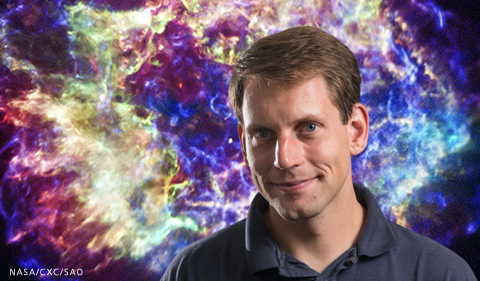London, UK, and Philadelphia, U.S. Nov. 19, 2019: Dr. Ryan Chornock, Assistant Professor of Physics & Astronomy at Ohio University, was named to the 2019 Highly Cited Researchers list from the Web of Science Group.
Chornock helped solved a 60-year-old mystery—the origin of very heavy elements such as gold, platinum or uranium—using observations from a very rare binary neutron star merger. And he recently helped discover that the universe is expanding 5 percent to 9 percent faster than expected—creating a “big bang” puzzle. At Ohio University, he is a member of the Astrophysical Institute.
- See Astrophysicist Chornock Contributes to Discovery of Neutron Star Merger.
- His work was published in Astrophysical Journal Letters—The Electromagnetic Counterpart of the Binary Neutron Star Merger LIGO/Virgo GW170817. IV. Detection of Near-infrared Signatures of r-process Nucleosynthesis with Gemini-South.
The highly anticipated list identifies scientists and social scientists who produced multiple papers ranking in the top 1 percent by citations for their field and year of publication, demonstrating significant research influence among their peers. The methodology that determines the who’s who of influential researchers draws on the data and analysis performed by bibliometric experts from the Institute for Scientific Information at the Web of Science Group.
The data are taken from 21 broad research fields within Essential Science Indicators, a component of InCites. The fields are defined by sets of journals and exceptionally, in the case of multidisciplinary journals such as Nature and Science, by a paper-by-paper assignment to a field based on an analysis of the cited references in the papers. This percentile-based selection method removes the citation advantage of older papers relative to recently published ones, since papers are weighed against others in the same annual cohort.
“Recognition and support of these exceptional researchers represents an important activity for a nation or an institution’s plans for efficient and accelerated advancement. The Highly Cited Researchers list contributes to the identification of that small fraction of the researcher population that contributes disproportionately to extending the frontiers of knowledge. These researchers create gains for society, innovation and knowledge that make the world healthier, richer, more sustainable and more secure,” said David Pendlebury, Senior Citation Analyst at the Institute for Scientific Information.
This year’s list continues to recognize researchers whose citation records position them in the very highest strata of influence and impact as it includes 23 Nobel laureates, including three announced this year: Gregg L. Semenza of Johns Hopkins University (Physiology or Medicine), John B. Goodenough of the University of Texas at Austin (Chemistry), and Esther Duflo of the Massachusetts Institute of Technology (Economics). Also included are 57 Clarivate Analytics Citation Laureates – individuals who, through citation analysis, we have identified as researchers ‘of Nobel class’ and potential Nobel Prize recipients.
A total of 3,517 researchers are celebrated for their performance in the 21 ESI fields, and 2,492 for cross-field performance, for a total of 6,009 unique researchers, as some Highly Cited Researchers appear in more than one field. This is the second year that researchers with cross-field impact – those with exceptional broad performance based on high impact papers across several fields – have been identified.
About the Web of Science Group
Web of Science Group, a Clarivate Analytics company, organizes the world’s research information to enable academia, corporations, publishers and governments to accelerate the pace of research. It is powered by Web of Science – the world’s largest publisher-neutral citation index and research intelligence platform. Its many well-known brands also include Converis, EndNote, Kopernio, Publons, ScholarOne and the Institute for Scientific Information (ISI). The ‘university’ of Web of Science Group, ISI maintains the knowledge corpus upon which the index and related information and analytical content and services are built; it disseminates that knowledge externally through events, conferences and publications and it carries out research to sustain, extend and improve the knowledge base. For more information, please visit www.webofsciencegroup.com.




















Comments